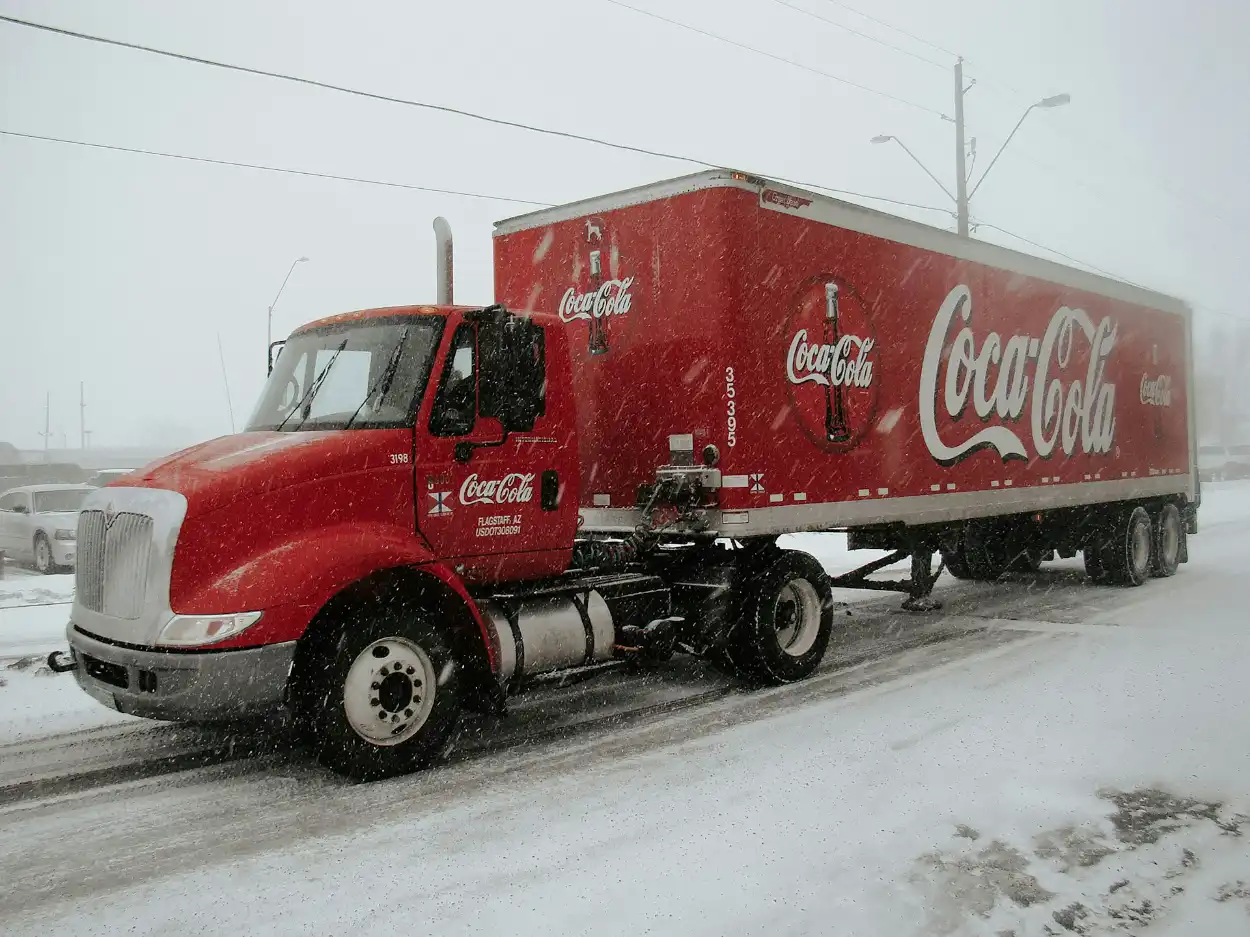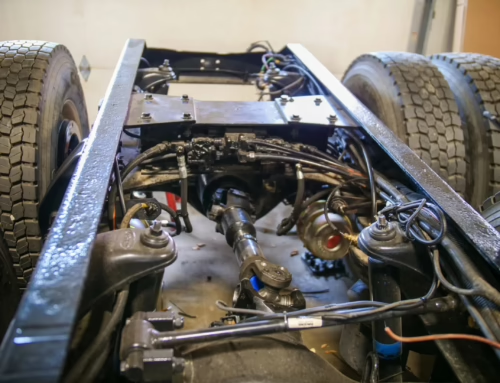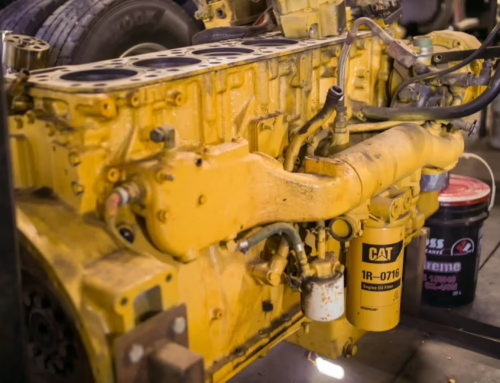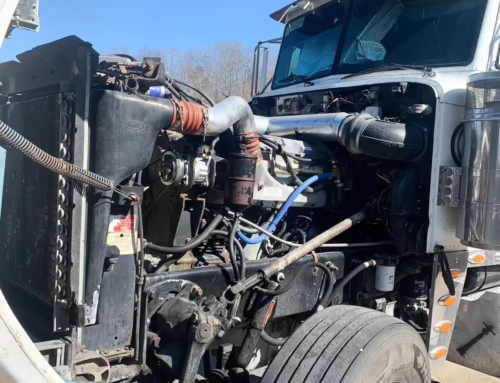7 Winter Driving Tips Every Vehicle Owner Should Know
Winter driving is no walk in the park, especially in Canada’s Maritime Provinces like Moncton, Dartmouth, and Woodstock. The combination of heavy snowfall, icy roads, and reduced visibility makes winter one of the toughest seasons for drivers. But with the right strategies, you can navigate the challenges safely and confidently. Whether you’re commuting to work or hauling freight across snowy highways, these winter driving tips are essential for keeping yourself and your vehicle safe.
1. Prepare Your Vehicle for Winter
The first step to safe winter driving is ensuring your vehicle is ready to handle the conditions. Cold weather impacts nearly every part of your car or truck, so a thorough inspection and tune-up are critical.
Start with your battery, as low temperatures can reduce its efficiency. A weak battery is a common cause of winter breakdowns. Test its charge and replace it if necessary, especially if it’s over three years old. Clean the terminals to prevent corrosion and ensure the connections are tight.
Next, check your fluids. Use winter-grade motor oil and antifreeze to protect your engine. Ensure the coolant mixture is 50/50 antifreeze and water, as this will prevent freezing in sub-zero temperatures. Top off your windshield washer fluid with a winter-specific formula that won’t freeze, and inspect your wipers to ensure they can handle snow and ice.
Most importantly, switch to winter tires. These tires are designed to grip icy and snowy surfaces better than all-season tires. Check the tread depth—anything less than 6/32” won’t provide enough traction in winter conditions. Also, keep an emergency kit in your vehicle with blankets, food, water, and a flashlight. In regions like Moncton, where storms can come without warning, preparation is your best defense.
2. Slow Down and Increase Following Distance
Winter roads are slippery, reducing your vehicle’s ability to brake and steer. Driving at regular speeds or tailgating other vehicles is a recipe for disaster. In places like Dartmouth, where black ice often forms on bridges and shaded roads, slower speeds and greater caution are essential. To stay safe:
- Reduce your speed: Adjust your driving to match the road conditions, even if it’s below the posted speed limit.
- Increase the following distance: Leave at least 6-8 seconds of space between you and the vehicle ahead to allow extra time for braking.
- Avoid abrupt movements: Sudden braking, accelerating, or turning can cause your vehicle to skid or lose control. If it does, it’s best to tap the brakes multiple times to regain traction.
3. Learn How to Handle Skids
Skids are one of the scariest situations drivers face during winter. Even experienced drivers can lose control on black ice or snowy roads. Knowing how to recover from a skid can save your vehicle—and possibly your life. Skids are particularly common in rural areas like Woodstock, where roads may not be salted or plowed as frequently as main highways.
- Rear-wheel skid: If your rear wheels lose traction, steer gently in the direction of the skid. Avoid overcorrecting or slamming on the brakes, as this can make the skid worse.
- Front-wheel skid: Ease off the gas and let the wheels regain traction naturally. Don’t panic or jerk the steering wheel, as this can cause the vehicle to spin.
4. Use Your Lights Effectively
Poor visibility is a frequent issue during Canadian winters. Snowfall, fog, and early sunsets make it harder to see and be seen by other drivers. Your vehicle’s lighting system is crucial for staying visible and maintaining awareness of your surroundings.
- Use low-beam headlights in snowy or foggy conditions. High beams can reflect off snow and reduce your visibility.
- Keep your headlights, taillights, and fog lights clean and free of snow or ice. Dirty lights reduce their effectiveness, making it harder for others to see you.
- Signal turns and lane changes earlier than usual to give other drivers enough time to react.
5. Plan Ahead and Stay Informed
Winter weather is notoriously unpredictable. One minute the roads are clear, and the next, you’re in the middle of a blizzard. Staying informed and planning your trips carefully can make all the difference.
- Check weather forecasts and road conditions before heading out. Apps and websites often provide real-time updates on closures and hazardous areas.
- Stick to main roads and highways, as these are more likely to be plowed and salted. Avoid shortcuts or backroads that may be less maintained.
- Plan for extra travel time to account for slower speeds and potential delays.
6. Keep Your Vehicle’s Fuel Tank Full
Running out of fuel during a Canadian winter isn’t just inconvenient—it’s dangerous. A full tank can keep your engine running to provide heat if you’re stuck or stranded. This small precaution can save you from a stressful and potentially dangerous situation.
- Keep your fuel tank at least half full to prevent condensation from forming inside the tank. Condensation can freeze in the fuel lines, causing clogs and engine issues.
- In rural areas like Woodstock, where gas stations may be far apart, a full tank ensures you don’t run out of fuel before reaching your destination.
7. Avoid Cruise Control on Slippery Roads
Cruise control is convenient, but it can be dangerous in winter conditions. It’s designed for steady road conditions, not for snowy or icy surfaces where traction changes frequently.
When your vehicle hits a patch of ice while using cruise control, it may try to accelerate or maintain speed, which can cause you to lose control. Instead:
- Keep both hands on the wheel to maintain maximum control.
- Adjust your speed manually to match road conditions.
Quick Reference: Key Winter Driving Tips
- Prepare your vehicle: Check your battery, fluids, tires, and wipers.
- Drive slower: Reduce speed and increase your following distance.
- Handle skids carefully: Steer into skids and avoid abrupt movements.
- Use your lights: Keep them clean and use low beams in snow or fog.
- Plan ahead: Check weather and stick to well-maintained routes.
- Keep fuel topped up: Avoid running out of gas in rural or icy conditions.
- Skip cruise control: Stay in manual control for better traction.
Winter Driving in Moncton, Dartmouth & Woodstock
Each region in the Maritimes presents unique challenges during winter:
- Moncton: Known for heavy snowfall, Moncton requires preparation for sudden storms and icy conditions. Winter tires and an emergency kit are a must.
- Dartmouth: Black ice and foggy mornings make visibility and traction key concerns. Always check your lights and reduce speed on icy bridges.
- Woodstock: With rural roads and infrequent plowing, Woodstock drivers should carry snow chains and plan for longer travel times.
Stay Safe This Winter
Driving during a Canadian winter may be challenging, but with these tips, you can navigate even the harshest conditions safely. Prepare your vehicle, adjust your driving habits, and stay informed about the weather and road conditions.
Looking for expert winter maintenance? Visit Rhino Truck Lube Centres in Moncton, Dartmouth, or Woodstock. From battery testing to winter tire installations, our team will ensure your vehicle is ready for whatever winter throws your way. Don’t wait—schedule your winter prep today! To learn more about heavy-duty trucks, check out our article on the difference between synthetic and conventional oils.




